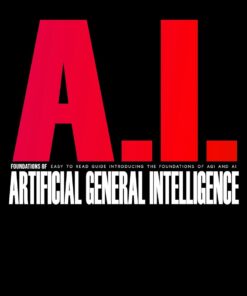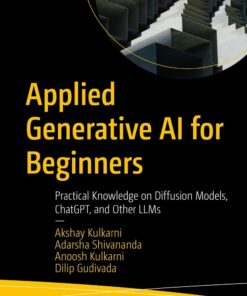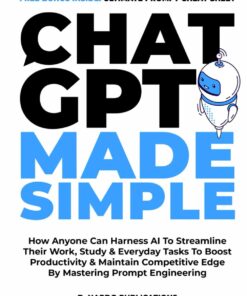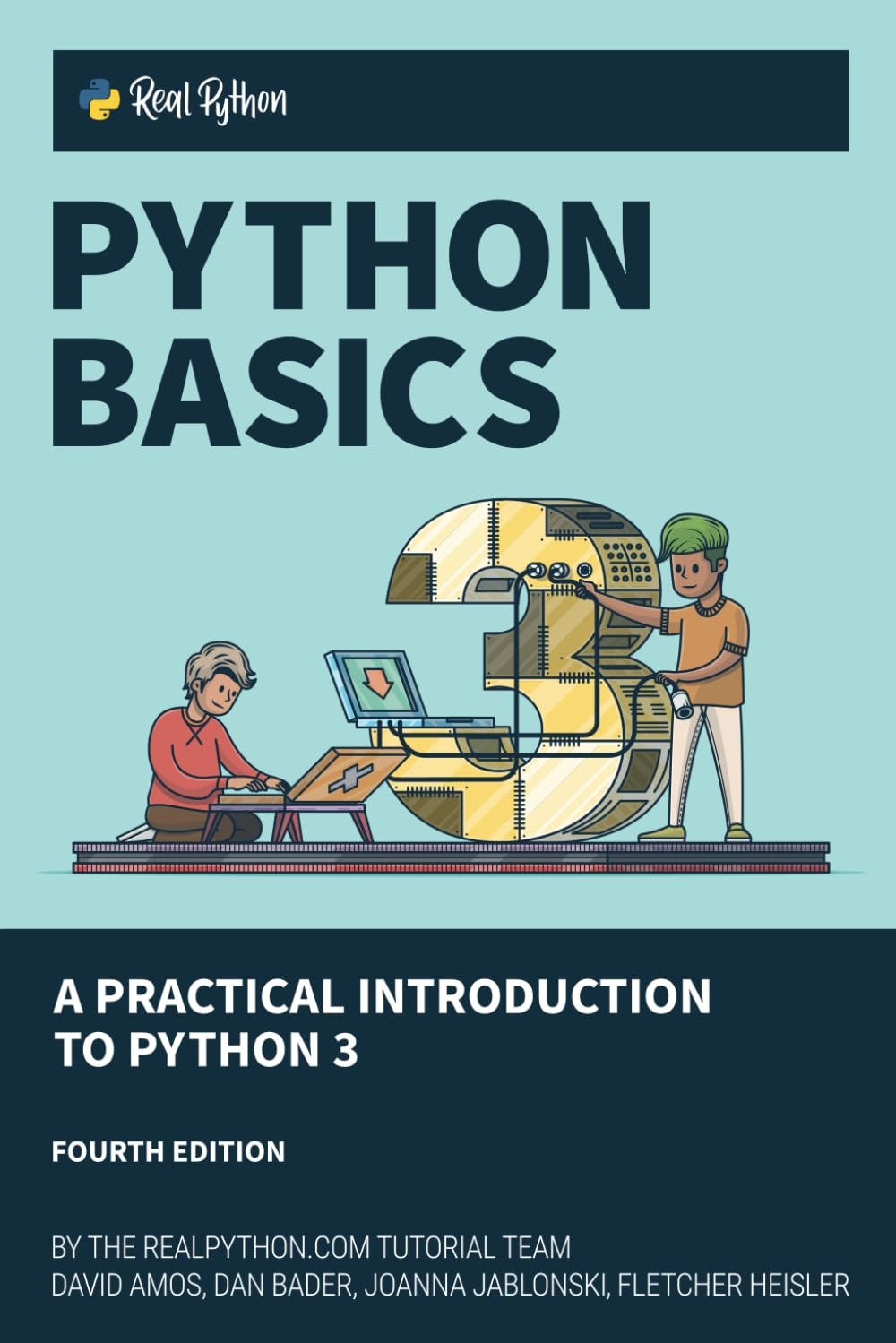Python Basics: A Practical Introduction to Python 3
$37.99
Make the Leap From Beginner to Intermediate in Python…
Python Basics: A Practical Introduction to Python 3
Your Complete Python Curriculum—With Exercises, Interactive Quizzes, and Sample Projects
What should you learn about Python in the beginning to get a strong foundation? With Python Basics, you’ll not only cover the core concepts you really need to know, but you’ll also learn them in the most efficient order with the help of practical exercises and interactive quizzes. You’ll know enough to be dangerous with Python, fast!
Who Should Read This Book
- If you’re new to Python, you’ll get a practical, step-by-step roadmap on developing your foundational skills. You’ll be introduced to each concept and language feature in a logical order. Every step in this curriculum is explained and illustrated with short, clear code samples. Our goal with this book is to educate, not to impress or intimidate.
- If you’re familiar with some basic programming concepts, you’ll get a clear and well-tested introduction to Python. This is a practical introduction to Python that jumps right into the meat and potatoes without sacrificing substance. If you have prior experience with languages like VBA, PowerShell, R, Perl, C, C++, C#, Java, or Swift the numerous exercises within each chapter will fast-track your progress.
- If you’re a seasoned developer, you’ll get a Python 3 crash course that brings you up to speed with modern Python programming. Mix and match the chapters that interest you the most and use the interactive quizzes and review exercises to check your learning progress as you go along.
- If you’re a self-starter completely new to coding, you’ll get practical and motivating examples. You’ll begin by installing Python and setting up a coding environment on your computer from scratch, and then continue from there. We’ll get you coding right away so that you become competent and knowledgeable enough to solve real-world problems, fast. Develop a passion for programming by solving interesting problems with Python every day!
- If you’re looking to break into a coding or data-science career, you’ll pick up the practical foundations with this book. We won’t just dump a boat load of theoretical information on you so you can “sink or swim”—instead you’ll learn from hands-on, practical examples one step at a time. Each concept is broken down for you so you’ll always know what you can do with it in practical terms.
- If you’re interested in teaching others “how to Python,” this will be your guidebook. If you’re looking to stoke the coding flame in your coworkers, kids, or relatives—use our material to teach them. All the sequencing has been done for you so you’ll always know what to cover next and how to explain it.
What Python Developers Say About The Book:
“Go forth and learn this amazing language using this great book.” — Michael Kennedy, Talk Python
“The wording is casual, easy to understand, and makes the information flow well.” — Thomas Wong, Pythonista
“I floundered for a long time trying to teach myself. I slogged through dozens of incomplete online tutorials. I snoozed through hours of boring screencasts. I gave up on countless crufty books from big-time publishers. And then I found Real Python. The easy-to-follow, step-by-step instructions break the big concepts down into bite-sized chunks written in plain English. The authors never forget their audience and are consistently thorough and detailed in their explanations. I’m up and running now, but I constantly refer to the material for guidance.” — Jared Nielsen, Pythonista
Additional information
| Dimensions | 6 × 1.44 × 9 foot |
|---|---|
| Publisher | Real Python (realpython.com) (March 16, 2021) |
| Language | English |
| Paperback | 635 pages |
| ISBN-10 | 1775093328 |
| ISBN-13 | 978-1775093329 |
| Item Weight | 1.85 pounds |
| Dimensions | 6 x 1.44 x 9 inches |
10 reviews for Python Basics: A Practical Introduction to Python 3
Related products
-

AI Foundations of Artificial General Intelligence: Easy To Read Guide Introducing the Foundations Of Artificial General Intelligence ‘AGI’ and AI
$0.00 -

Applied Generative AI for Beginners: Practical Knowledge on Diffusion Models, ChatGPT, and Other LLMs
Rated 3.00 out of 5$0.00 -

ChatGPT Made Simple: How Anyone Can Harness AI To Streamline Their Work, Study & Everyday Tasks To Boost Productivity & Maintain Competitive Edge By Mastering Prompt Engineering
Rated 4.89 out of 5$24.99



David Schroeder –
Clear. Explanations. Relevant examples. Structure that allows reader to build knowledge incrementally and logically. Outstanding overall. I Highly recommend it.
Amazon Customer –
I have started getting back into coding once again with Python and prior to that Java. Until now the books i got were good but not great and failed to hold my interest. I find this Python basics book to be so well written and interesting. I just hit chapter 7 and unlike some reviews I have read I have seen nothing that was not covered in prior chapters. Yes an Index would have been nice but anything i need to go back and refresh is readily available on Google. For me so far it is mostly going back to look at syntax. The review exercises and challenges get a bit more complex with each chapter which is great. Finally what I really like is that their examples often intentionally produce errors and odd behaviors and then they give very good explanations as to why it is that way and what to watch out for. I lied, that wasn’t the final thing. I also like the that they will teach you something and then say it is a bad practice to do that.
Brian Grapilon –
While still reading the book and performing the exercises is good practice, I feel that the book is a good example of a practical introduction. Python 3 is a great programming language to learn, and the book has a fairly sufficient foundation for learning the language. Prior experience with Python 3 is not necessary, but understanding how a programming language works is a good primer to learn Python 3 and the book is structured like a timely exercise and practice format. Each topic is followed by a series of practical exercises, and doing these exercises helps with the knowledge gained. Some aspects of the language are covered that may be glossed over in a general explanation, but the book is patient with these aspects.Overall, I recommend this book for someone who wants to learn Python 3 in a few months (about two months on a continuous basis; otherwise, three to four months average for the whole book).
Mark Ingram –
Why I like This BookI’m a fan of RealPython Tutorials and the instructors. I already had purchased the digital copy of this book. I know enough about Python now to not read from start to finish, but I’ll refer to the book all the time. I needed a scraper to check on availability of equipment and a gym equipment site. Bingo! I start with the scraping using the Beautiful Soup parsing library. I can’t say enough good things about this book for clarity of writing and examples that you can follow. This is a book written by instructors that know Python well rather than a programmer, and this shows in it’s ease of learning.Why Did I Buy This Book?I tinker with Python for RaspBerry Pi, web scraping etc. I’d like to get into machine learning but can’t commit the time yet.
J.LEE –
So I bought the digital version of this book when it’s still in pre-release. I bought this book when it’s available in paper format. RealPython is the standard when it comes to Python learning. However, one page in the book is crooked and the page is also cut weird. It stands out from the rest of the pages when the book is closed. I’m not sure if it’s an issue with just my book or it’s the same for everyone. However, the whole page is still visible, so it does not interfere with reading, but it is a bother that the physical book is not perfect for how many revisions it’s gone through during the pre-release digital versions.The page that’s crooked and cut wrong in my book is on page 525 & 526.
RC –
I recommend this book for everyone learning Python. The style is friendly, and it guides you through difficult topics in a step-by-step fashion. The examples and exercises are interesting, ranging from easy to challenging. Solutions are provided in the website. This book is part of a larger project: Real Python. So I also encourage everyone to go to their website (a very nice website, by the way) and learn more advanced topics and techniques. Congratulations to the Real Python team, and thank you from thousands of learners around the world!
Leonard Miller –
This is a well written book that does a great job of explaining the material. The quizzes at the end of each chapter are very helpful.
Amazon Customer –
This book is organized extremely well, taking the student step-by-step through all aspects of Python. Even Object Oriented Programming in Python now makes sense to me. If you use this book, make sure you do all the review questions and print out the programs and the output they generate — makes for a handly reference manual that you’ll go back to time and again.
Richard –
[This review was originally posted on April 5, 2021. It was updated on April 23, 2021. I am downgrading the book from three stars to two stars. Additional comments added on April 23 are added in square brackets.]I give this book a tepid thumbs-up. [Make that a hand gesture of “Eh, so-so.]I used this book to come up to speed on Python from a dead stop. I have a good deal of experience with other languages (C/C++, Fortran, a bit of Perl, C shell, bash, IDL, maybe one or two others that I have dipped into and since forgotten.) I can’t say whether the book is good or not for total programming beginners; it’s been too long since I was in that state.For people like me:What’s good: you can read through it fairly quickly and get an overview of the concepts, syntax, etc., associated with Python. The assumption here is that you are someone who prefers to get an overview from kicking back with a book rather than becoming glazed, leaning over your laptop even longer than you already are, jumping around between web pages.What’s bad: (1) There is no index! (??!??) This is a very grave defect and is the biggest reason that I deducted stars [and that after having the book for a few weeks, I deducted another star]. It seriously limits the usefulness of the book after you have flipped through it. Since one does not get all the concepts clearly just from a quick read, one would wish to refer to it for memory refreshment when trying to get traction. The lack of an index frustrates that and is really a drag; you have to search for what you are looking for, based on the table of contents, recollection and page-flipping. It’s tiresome. I wonder if it is a result of rushing to market, or just plain laziness. [This issue has been such a problem and a pain that I am going to look for another book that can serve as a beginner’s reference.] (2) Having also watched several excellent Python tutorials from India on YouTube, I can say that this book reads like a screenplay for YouTube tutorials. I couldn’t count the number of times the book says, “Let’s dive in!” “Let’s get started!” Etc.! Etc.! Etc.! (i.e., way too many exclamation points in general) [; very lazy and somewhat condescending writing.] This became annoying. A minor point, certainly; no stars were deducted for this. [I would add that the book is mostly white space with relatively large print. The amount of information is not commensurate with the number of pages.] (3) Very heavy promotion of the RealPython web site. No stars deducted for this, either. Just irritating.Evidently RealPython got out first with a book on Python3, or at least got out with some linear combination of being early plus having effective SEO. [Either that, or I was lazy and in a hurry when shopping for a book.] If and when the O’Reilly “Learning Python” book (author: Mark Lutz) comes out for Python3, I will buy that. I find the O’Reilly books hold their value as practical references even as you learn whatever skill it is better and better and even as new versions of the particular technology come out – up to a point. This book that I am reviewing won’t do that. (BTW, I actually own “Learning Python” for Python 2.3, copyright 2004. But it is too old to be reliable even for basics on Python3. For example, the print() syntax has changed. If *that* doesn’t work, then you know a book is out of date!) [This was not meant to be a plug for O’Reilly, just a comparison to books – typical O’Reilly books, for example, but by no means only O’Reilly – that are heftier in terms of information content and hold their value.]The bottom line: depending on who you are and what your purpose is, this book could be very helpful. [Somewhat helpful.] But be aware of its limitations as you type in your credit card number. [At this point I would recommend looking for something else. Yeah, this can be useful, especially if your employer is buying it, not you, but if it is your money, look for something better. The lack of an index is really a disaster.]
J Barnes –
The book is structured well, with clear and concise explanations, however, it missing an index is big negative and I really don’t understand how something like that could’ve went unnoticed. As for the book itself, it’s great and although missing an index sucks, I believe it’s still worth it, if you’re wanting to learn Python.